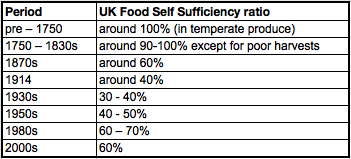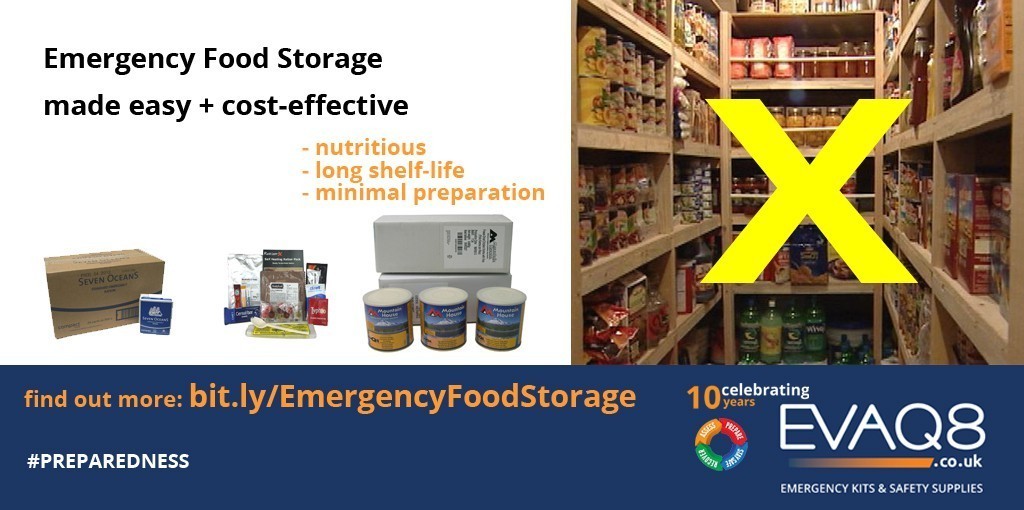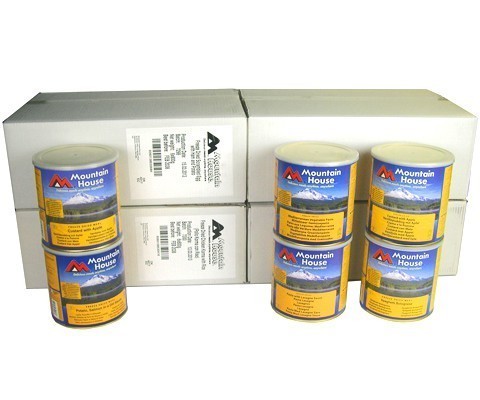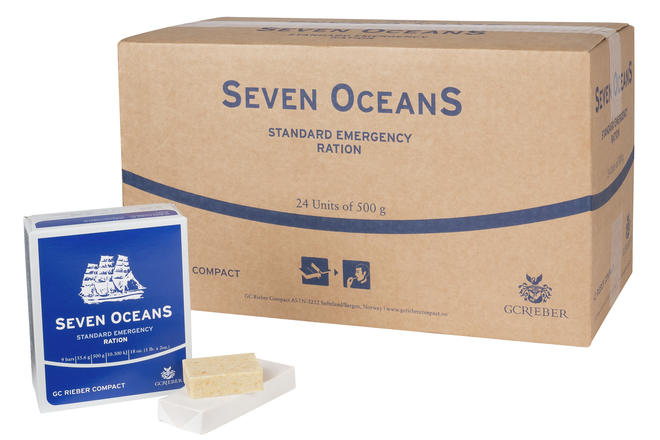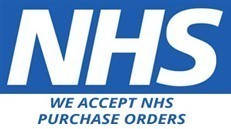Food Security - Household and Community Emergency Food Storage
What is Food Security?“…when all people, at all times, have physical and economic access to sufficient, safe and nutritious food to meet their dietary needs and food preferences for an active and healthy life.” FAO Food and Agriculture Organization, United Nations The United Kingdom holds no strategic food reserves and overall reserves run to just a few days1. Responsibility falls on farmers and supermarkets:
House of Commons Environment, Food and Rural Affairs Committee, Food security; Second Report of Session 2014–15 | |||||||||||||||||||||||||||||
What happens to Food Supplies in a Major Incident?Supermarkets rarely keep more than 48 hours of foods stocks. Resupply may be delayed for several days or more which is why panic buying typically sets in ahead of anticipated events; i.e. recently Shoppers in DC panic buy ahead of worst storm in decades or UK Panic buying – Market Crash Fears, panic buyers strip shelves of bottled water as 'potentially deadly' bug hits hundreds of thousands of people. Shelves clear out within hours resulting in shortages. |  | ||||||||||||||||||||||||||||
Why Community Emergency Food Storage?The short answer is: efficient capacity management, increased community resilience and community preparedness. Space for emergency food storage in households is often restricted, especially in modern sub-urban and urban environments. In addition, individuals may not possess the right knowledge or resources to make the necessary arrangements to reduce their vulnerabilities. With the rise of community resilience groups often led by skilled community first responders and supported by local government (i.e. Local Resilience Forums), it is only a logical progression that aspects of practical food security are included in local community preparedness and resilience plans. Community preparedness is an important component of risk reduction strategies at local and national levels. |
| ||||||||||||||||||||||||||||
What type of food is best for Emergency Food Storage?Storing a mixture of nutritious ready-to-eat and long-life dried food is best to cover both immediate demand and medium to longer-term needs. For ease of use, we recommend a storage provision of minimum 2000 calories per adult per day and special provisions for elders and the very young.
Freeze dried meals: cost-effective, long shelf-life, lightweightFreeze dried meals are pre-cooked meals that have been flash frozen, packaged in foil pouches or metal tins. Freeze dried foods are nutritious, extremely light - a single meal can weight as little as 100g –and keep their original shape, texture and taste. They can be stored at room temperature without spoiling for up to 25 years. To prepare, simply add boiling water to rehydrate the food to its original form and taste within minutes. See solutions for food preparation.
|
| age group | male kcal requirements | female kcal requirement |
| 0-4 | 1320 | 1250 |
| 5-9 | 1980 | 1730 |
| 10-14 | 2370 | 2040 |
| 15-19 | 2700 | 2120 |
| 20-59 | 2460 | 1990 |
| 60+ | 2010 | 1780 |
| pregnant | 285 extra | |
| lactating | 500 extra |
References:
- 1 “Global Food Systems and UK Food Imports: Resilience, Safety and Security”, Economic & Social Research Council, 2012
- 2 WHO, Food and Nutrition Needs in Emergencies (2004)
- Global Food Security Programme
- DEFRA: UK Food Security Assessment 2009
Of interest:
- RUSI commentary; Braw, E. (2018) Scandinavia's Homeland Defence: A model for Other Countries? Scandinavia has a robust homeland defence system that is popular and works. Government agencies plan for food provision in emergencies where grocery deliveries won't reach shops for several days.
Tweet thank you for sharing!
If you like this content then join us for even more Emergency Preparedness
a note on wholesale pricing
From food supplies to coastal defences the UK is ill-prepared https://t.co/7LGyBOPa6B #preparedness #climatechange #resilience #foodsecurity
— EVAQ8 Emergency Kits (@EVAQ8_news) July 17, 2016


